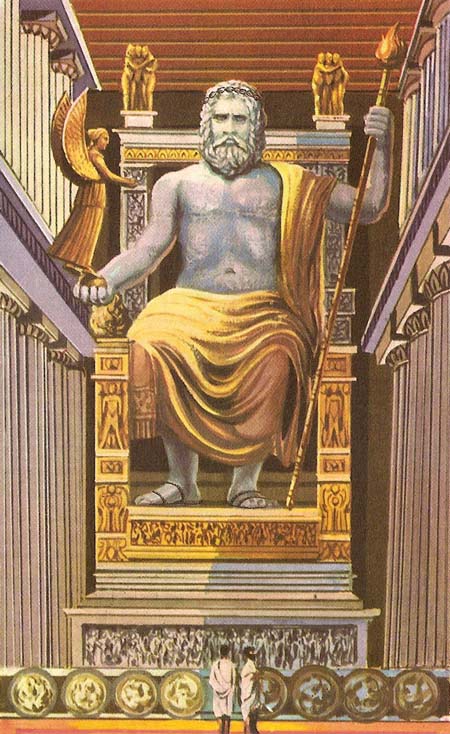Statue of Zeus at Olympia

Artist's reconstruction of the Statue of Zeus at Olympia.
The Statue of Zeus at Olympia was one of the seven ancient wonders of the world. The sculptor Phidias was one of the greatest Greek artists. In the mid-fifth century BC he was commissioned by Pericles to supervise the ornamentation of the Parthenon. He was also responsible for three of the most famous statues of antiquity: the colossal bronze figure of Athena on the Acropolis (sailors coming into Piraeus, the port of Athens, could see the sun twinkling on her spear from miles away); the gold and ivory state of Athena inside the Parthenon; and that of Zeus which was made for the Temple of Zeus at Olympia.
Zeus, seated on a throne within his temple, was a towering figure over 40 feet high. In his right hand was a small statue of Victory, in his left a scepter crowned with an eagle. His flesh was ivory, his robes gold; and his throne was inlaid with gold, ivory, ebony, and precious stones. A Roman writer, Quintilian, said that the beauty of Phidias' Zeus had added something to traditional religion. We can only guess at the awe-inspiring effect, for there is no surviving picture of the statue. Some coins of the nearby city of Elis show a head of Zeus which may be copied from Phidias' statue; and some molds, on which the gold for the drapery was hammered into shape, were found by excavators near Phidias' workshop at Olympia. But the statue itself was eventually taken to Constantinople where it was destroyed by fire.
